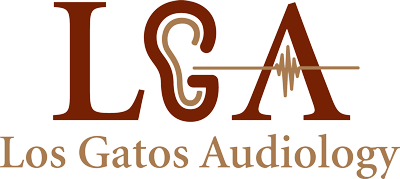Driving is a daily necessity for many individuals, providing independence and convenience. However, for those with hearing aids, it’s important to take extra precautions to ensure safety on the road. While hearing aids improve communication and awareness, they can also pose challenges while driving. Let’s look at some essential safety tips for driving while wearing hearing aids. Hopefully, by following these tips, you will be able to confidently navigate the roads, ensuring your safety and the safety of others.
Keep Your Hearing Aids in Optimal Condition
Before hitting the road, it’s crucial to ensure that your hearing aids are in optimal condition. Regularly clean and maintain your devices, following the manufacturer’s instructions. Keep an eye on battery life and replace them when needed. Consider carrying spare batteries in your car to avoid any inconvenience during your journey. Furthermore, if you notice any issues with your hearing aids, such as reduced sound quality or distortion, consult your audiologist for a check-up or necessary repairs. Keeping your hearing aids in top shape will enhance your driving experience and ensure better auditory awareness on the road.
Minimize Distractions in the Car
Driving requires concentration, and reducing distractions is crucial for everyone on the road. Individuals with hearing aids should be particularly mindful of distractions that could affect their ability to hear important auditory cues while driving. Keep the following tips in mind:
- Reduce noise: Minimize unnecessary noise in the car by turning off the radio or lowering the volume. Excessive noise can make it difficult to distinguish important sounds like sirens or horns.
- Limit conversations: Engaging in lengthy or intense conversations can divert your attention from the road. Focus on driving, and if you must talk, keep conversations concise and straightforward.
- Avoid multitasking: While driving, avoid activities that may divert your attention, such as eating, grooming, or using mobile devices. These distractions can compromise your ability to respond to auditory signals on the road.
- Utilize visual cues: Rely on visual cues, such as traffic lights, road signs, and mirrors, to supplement your auditory awareness. Being attentive to your surroundings visually can compensate for any potential hearing limitations.
Be Mindful of Your Hearing Aid Settings
Different hearing aid settings may be suitable for different environments, and driving is no exception. Consider adjusting your hearing aid settings to optimize your hearing experience while on the road. Consult your audiologist to ensure that your hearing aids are programmed appropriately for driving situations. Here are a few recommendations:
- Directional microphones: Activate the directional microphone mode, which focuses on sounds coming from the front while reducing background noise. This setting can enhance your ability to hear important sounds, such as sirens or horns.
- T-coil or Bluetooth connectivity: If your hearing aids have T-coil or Bluetooth capabilities, connect them to your car’s sound system for better sound clarity and to reduce external noise interference.
- Wind noise reduction: Enable wind noise reduction features in your hearing aids to minimize the impact of wind noise while driving with open windows or a convertible top.
Regularly assess your hearing aid settings to ensure they align with your driving needs. Experiment with different settings to find what works best for you, and don’t hesitate to consult your audiologist for professional guidance.
Wrapping It All Up
Driving with hearing aids requires additional attention and precautions, but it shouldn’t deter you from enjoying the freedom of the open road. By following these safety tips, you can enhance your driving experience, mitigate risks, and ensure the safety of yourself and others. Remember, safety should always be the top priority when behind the wheel, regardless of your hearing capabilities.
Drive safely and confidently, knowing that your hearing aids are just one part of the equation for responsible driving!
We hope you found this information about driving with hearing aids useful. If you have any other questions about your hearing aids, assistive listening devices, or to simply schedule your next hearing check-up, please contact us. Our friendly team of hearing health professionals are here to assist you with all your hearing-related needs.


